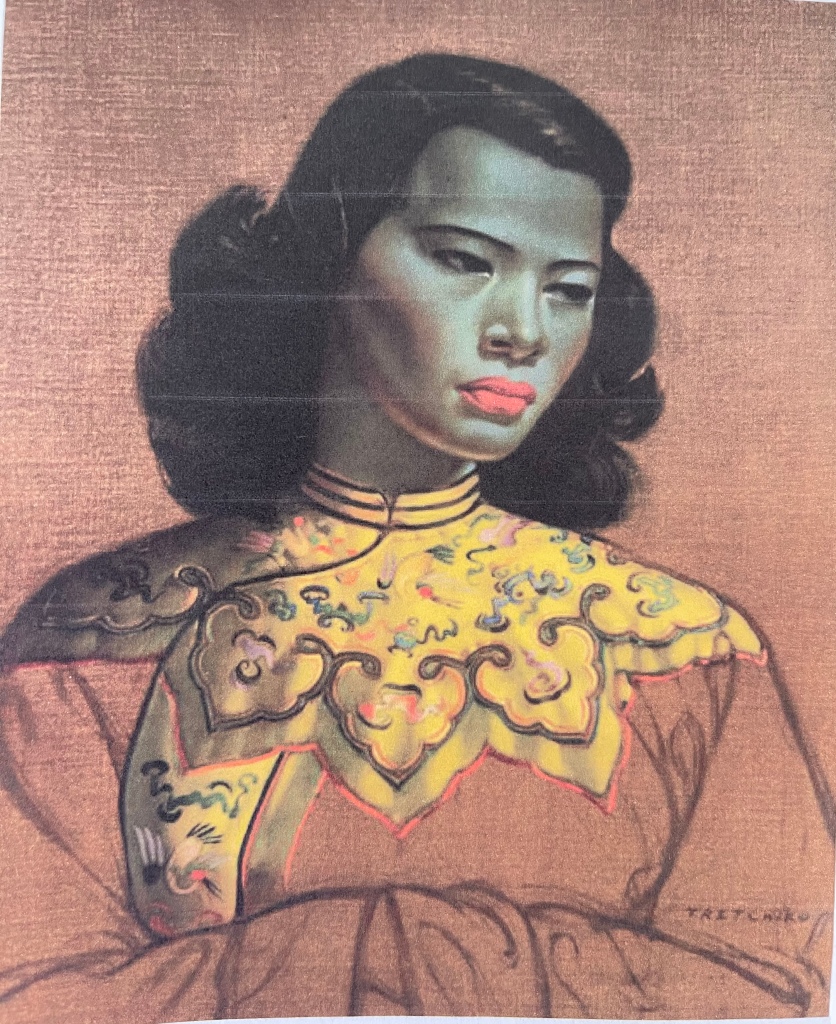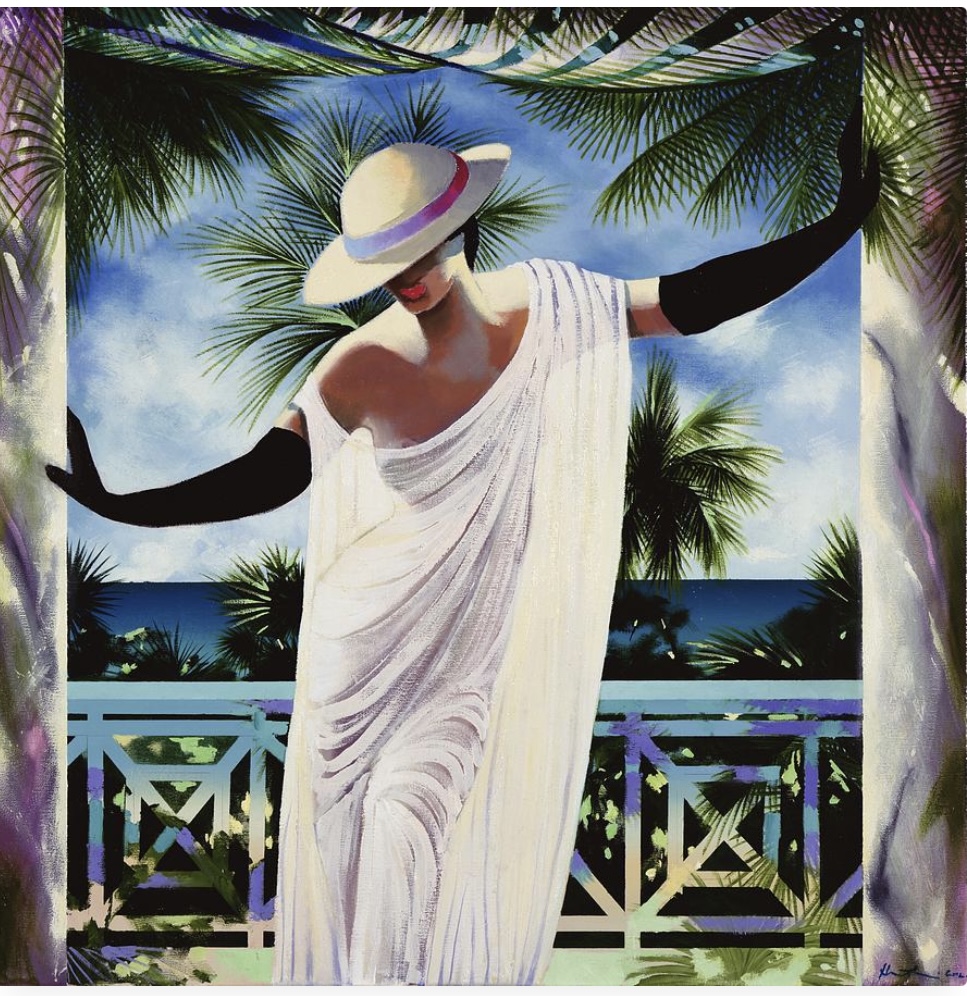Below, I take notes on key and essential theses from the recommended reading ‘Avant-Garde and Kitsch’, Clement Greenberg, and Art & Culture Critical essays (1939). I was not able to put page numbers because I read the essay on http://www.sharecom.ca where the page numbers were not indicated.
- ‘Hence it developed that the true and most important function of the avant-garde was not to ‘ experiment’, but to find a path along which it would be possible to keep culture moving in the midst of ideological confusion and violence.’
- ‘The masses have always remained more or less indifferent to culture in the process of development’.
- ‘Where there is an avant-garde, generally we also find a rear-guard. True enough -simultaneously with the entrance of avant-garde, a second new cultural phenomenon appeared in the industrial West: that thing to which the Germans give wonderful name Kitsch: popular, commercial art and literature with their chronotypes, magazine covers, illustrations, ads, slick and pulp fiction, comics, Tin Pan Alley music, tap dancing, Hollywood movies, et., etc.’
- ‘Kitsch is a product of the industrial revolution, which urbanised the masses of Western Europe and America and established what is called universal literacy. Before this, the only market for traditional culture, as distinguished from folk culture, had been among those who, in addition to being able to read and write, could command the leisure and comfort that always goes in hand in hand with the cultivation of some sort. But with the introduction of universal literacy, the ability to read and write became almost a minor skill like driving a car, and it no longer served to distinguish an individual’s cultural inclinations since it was no longer the exclusive concomitant of refined tastes’.
- ”To fill the demand of the new market, a new commodity was devised: ersatz culture, kitsch, destined for those who, insensible to the values of genuine culture, are hungry nevertheless for the diversion that billy culture of some sort can provide’.
- ‘But the ultimate values which the cultivated spectator derives from Picasso are derived from at a second remove, as the result of reflection, the immediate impression left by the plastic values. It is only then that the recognisable, the miraculous and the sympathetic enter. They are not immediately or externally present in Picasso’s painting, but must be projected into by the spectator sensitise enough to race sufficiently to plastic qualities. … In Repin, on the other hand, the ‘reflected’ effect has already been included in the picture, read for the spectators unreflective enjoyment. where Picasso paint s cause, Repin paints effect.’
Exercise 2.2. Describe the features of each of these paintings that you think correspond to Greenberg’s view that kitsch ‘imitates the effect of art”. In other words, how was the artist made the painting look artistic- as if for a sophisticated taste.
After I had read on the topic of Kitsch and Art, I realised that there are no concrete or more precise definitions of Kitsch besides what has been given by Greenberg. Other definitions of Kitsch just repeat his ideas with different sets of words. There is no list of particular concrete ‘ Kitsch features’ that could be useful for this exercise.

The Chinese Girl is widely known as a masterpiece of Kitsch. Some art critics/professionals hate it, and some find it extraordinary. It has been sold for USD 1.5 mln at Bonham’s auction house, and it is reputed to be the most reproduced image in the world. Many art critics dismissed this painting, calling it ‘Kitsch”. As critic Brian Sewell said ‘ I wish it had never happened’. It is interesting to observe and worth mentioning that haters usually describe their emotions. So they are prone to be very subjective in their judgments, as anyone else. There is no specific colour, line, or brushstroke officially described and accepted as a feature or tool of Kitsch. Even Greenberg in his essay about Kitsch describe emotional perception of the viewer, such as ‘quick satisfaction’. After reading different art critics’ opinions about this painting, I found out that what haters judge is only 100% their emotional impression, like ‘dreadful’, ‘freaking out’, ‘green face is awful’. What they say can be considered and sound as quite emotional and irrational. For example: the Girl’s facial expryession and skin colour are ‘odd’. I find this as a bizarre ‘problem’ for the painting in all History of Art, where we can find all sorts of skin colours in figurative painting.
Most haters find the painting Kitch because Tretchikoff painted her in Chinese dress, her face is too green, the gaze is odd, the hair are too black. It is too Chinese in every single stroke of brush, so it is a cliche. They also bring an argument it is Kitch because it has been reproduced and sold so massively. It was popular, and everything what isn popular is Kitsch, it has no artistic value. This is a very subjective and intellectually snobbish view.
I hope the course authors do not push us to take any, even still dominant opinions in Art as a permanent mindset towards particular artworks. But want us to reflect on different phenomena in visual culture and develop our view on artworks. Since I have found two polarised opinions on the painting, I dare to have my thoughts. To me, the Chinese Girl painting looks very interesting and intriguing. As described by Greenberg, Kitsch brings fast and easy to digest emotions that don’t require you to think and reflect on. When I look at the Chinese Girl, I can not say that I instantly understand the author’s idea, and I don’t have to think, as Greenberg insists in his essay about the Kitsch. I can not say that I receive a quick and easy, unreflective aesthetic satisfaction from this painting- what would be the case for Kitsch.
On the contrary, the painting makes me think and wonder about the image in the sense of Girl’s story and the author’s idea. Even though I have Asian facial features by myself, the Chinese Girl seems to be enigmatic, and I don’t perceive her particular face as suitable for ‘digestion’ by mass-market products only. Hateful art critics said that this painting was a piece of Kitch because the look of the Girl in some way satisfied the mass, vulgar understanding of exotic beauty.
I couldn’t find any article explaining how Tretchikoff ‘imitated art’ in this painting. I found a lot of emotions but not rational explanation. After reading Greenberg’s easy on Art and Kitsch, I understood that ‘imitating art’ presumes giving the artwork a ‘not thinking’, quick, simple and pleasant satisfaction. Haters find the Chinese Girls as a part of this story. But there is an opinion of designer Wayne Hemingway, who considers Tretchikoff as ‘a pioneer and, a precursor of Andy Warhol, but someone whose direct commercial appeal generated instant snobbery from the art world’ the modern dismissiveness is a product of elitism’. (Gaze of the Green Lady, Finlo Rohrer, 30 August 2006, BBC News magazine).
I share the opinion of Hemingway. The image is very complex to me, it doesn’t bring me a thoughtless ‘quick satisfaction’ as Kitch usually does. The face is not plain. It has something masculine in it, as well as containing a feminine enigma. It is not a conventionally pretty face that we could expect the mass market would love. There is a notion of ‘conventional, popular type of beauty and for me, this Girl’s face is definitely not the case: her beauty is not a popular type. I am also not the victim of Trechnikoff’s ‘deliberate sophistication imitating art’ as it is hinted at in the exercise. The painting leaves a quite disturbing and unsettled feeling to me. I don’t find quick answers on the surface of the canvas when I look at it. The image stays in my head even if I don’t look at it. I don’t like the Girl, but I keep thinking about it. These are signs of good Art.
I think this painting is amazing, and it even could be considered an avant-garde because Tretchikoff brought a very new type of beauty to the Western world. In some sense, this was a very fresh approach to paint a woman, the Western art world has never seen before. Plus the overall prevailing attachment to Western feminine beauty standards . The skin colour is very masculine – bleu-greyish, even metallic. Her facial expression is also not conventionally feminine and delicate. The overall manner of painting is very decisive. The image is strong and well defined with resolute brushstrokes. Many art critics could not appreciate it because they have been raised, educated and operated within a Western paradigm of Art and feminine beauty standards.
I think Greenberg missed the opportunity to reflect on cases when art establishment tends to be rigid. He was prone to elitist thinking. At the same time, the masses can be more advanced and open to the new social perception of Art. It is pretty unrealistic and naive, and unintelligent to assume that art critics are always right and they are the only ones who have ‘good taste’ or their opinions are never controversial. I wonder how Greenberg would explain when we reflect on how great Art touches the hearts of masses, including educated Art professionals and commoners. Why crowds have been always queuing to gaze at Mona Lisa and Michelangelo? Are they all sophisticated and educated art lovers? Of course not. But many of them do appreciate the beauty and are sensitive to it. Even though I agree with Greenberg’s notion of Kitsch and there are such things. Still, I am very far from the statement that masses are culturally insensitive or cannot appreciate beauty by nature. Greenberg missed this aspect of Art and culture. Of course, some things are Kitch, like mass-produced plastic souvenirs, but the Chinese Girl is much more than that. I think this painting is a case when a commoner can appreciate the beauty too. Here I want to bring words of Andy Warhal, who commented about this painting ( Viviene Clair Hawkins, April 3, 2020): “it has to be good. If it were bad, so many people would not like it”. I really imagine the conversation about Kitch between Andy Warhal and Clement Greenberg!
As a resume I want to bring one opinion, expressed by Giles Peppiatt, Director of South African at Bonhams (25 January 2013/Art News/ online on http://www.artlyst.com): ‘The iridescent hues of “Chinese Girl’ reflect Tretchnikoff’s experimentation with possibilities of his color palette: the green-blue patina- like effect of the sitter’s face is uncanny, heightened the red of her lips and far,ed by her lustrous dark hair. The deftly handled golden hues and decorative detail of her tunic emerge from lines of charcoal on brown canvas, a combination of media familiar from works like ‘Basotho Girl’ and ‘Zulu Maiden.’ Today this painting still has its haters and at the same time it is recognised as pop culture icon.
Do you leave footprints in the sand?, Andrew Hewkin, 2002 (oil on canvas, image via http://www.andrewhewkin.com;

This painting I can categorise as a sample of Kitch because it is indeed dull and boring. Nothing is fascinating about it. It is very plain with a claim for being an artwork. Indeed it imitates Art because it brings very conventional popular culture’s attributes such as an ‘ elegant lady’ having a vacation in Barbados – so cheesy. The pose, hat, and long black gloves are very cheap signs of ‘elegance’. The background is the same as on mass-produced postcards from exotic islands – nothing more.
Bibliography: 1) ‘The Chinese Girl’: The Mona Lisa of kitsch, Mathew Bell, 2013, online on http://www.independent.co.uk [accessed on March 22, 2021] 2)Vladimir Tretchikoff, South African Artist, John M. Cunningham, 2013 and Editors of Encyclopaedia Brittanica, online on http://www.brittanica.com [accessed on 22 March, 2021]; 3) Avant -Garde and Kitsch, Clement Greenberg, Art & Culture Critical essays, 1961, Beacon Press Boston, online on http://www.sharecom.ca[accessed onMarch 15, 2021]; 4) ‘Mona Lisa’ of kitsch by Bryney Jones, 2013, online on http://www.cnn.com [accessed on March 22, 2021]; 5) Kirsch Art: love it or loathe it?, Jonathan Jones, 2013, online on http://www.theguardian.com [accessed on March 21 2021]; 6) Gaze of the Green Lady, Finlo Rohner, 2006, online on http://www.news.bbc.co.uk [accessed on March 22,2014]; 7) Kitsch and the Modern Predicament, Roger Scruton, 1999, online on http://www.city-journal.org [accessed on March 21, 2021]; 8) A fine line between art and kitsch, Roger Scruton,online on http://www.forbes.com [accessed on March 21, 2021]; 9) Top 10 -Kitsch Works of Art- Artlyst, Editors of Artlyst, online http://www.artlyst.com [accessed on March 21 2021]; 10)The Kitsch Movement , Willem Venter, 2018, World Wide Kitsch Youtube channel, Youtube, [accessed on 22 March, 2021];
Added after receiving my Tutor’s feedback. Below is the final comment of hers about how I managed with the exercise.
‘Remember that the question is asking you something very specific in relation to one individual critic. It’s not suggesting that this is the only credible response. The central core here is that these paintings have been seen as a kind of ‘pastiche’, ‘The Chinese Girl’ on the basis that it presents a standardized, clichéd ( and thus problematic Western) view of the ‘exotic’ East. You might find it interesting to read Edward Said’s writings on this subject.
‘Do you leave footprints in the sand?’ It’s interesting that your reaction to this second painting is so different. Have a think about this!
Finally, I realise that you have found this exercise problematic, but try and remain objective.’
My self reflection on this exercise.
It is difficult for me to accept my Tutor’s opinion that I ‘struggled’ with this exercise.
These are my thoughts and self reflection about how I did with this exercise and the topic of Kitsch:
1) I read Greenberg’s essay, successfully grasped his ideas, and applied them to the painting and the exercise.
2) I have done extensive reading about this painting, such as the views and opinions of different art critics and professionals, places on reliable sources – art platforms and respectable media such as BBC, Independent and the Guardian, who hire professional art critic as their columnists. I have been inclusive in my research approach; There is no much theory I could find for this exercise, besides Greenberg’s essay.
3) I brought clear points in my arguments about this painting: why I think it is not the Kitsch and where we can find more questions reflecting on Kitsch and Greenberg’s views. I can assume that we were not asked to develop our individual opinion on whether the painting is Kitsch or not. But if the student did so, it can not be considered as ‘struggling’. I had to include my view because I thought it was a natural, fundamentally important part of the exercise.
4) My essay is well structured. It includes the brief story of the painting, both opposite views on the painting and my reflection on Greenberg’s ideas in his essay about the phenomena of Kitsch, and the resume. I brought the answers on the question in the exercise: what features of the painting can be perceived as Kitsch, what the author of the painting ‘did’, so the artwork is considered as a Kitsch.
5) The exercise contained two paintings, and I explained why I found the one as an example of Kitsch. Finally, I have applied the concept of Kitsch, reflecting on both images.
I also find my Tutor’s comment that I have to be more objective very confusing. I fully understand what objectivity means. Precisely because of that, I brought my criticism on Greenberg’s elitism and reductionism and different opinions of the ‘Chinese Girl’ painting coming from art professionals. I came with my point of view about the painting, but it doesn’t mean that I was ‘subjective. My arguments don’t look more subjective than expressions of art professionals who dislike the artwork. I indicated this problem by describing their emotional and irrational perception of the image.
I think I went well beyond the exercise and demonstrated a good level of independent thinking and application of the concept.
I also find my Tutor’s comment that I have to be more objective very confusing. I fully understand what objectivity means. Precisely because of that, I brought my criticism on Greenberg’s elitism and reductionism, as well as different opinions about the ‘Chinese Girl’ painting coming from art professionals. I came with my point of view about the painting, but it doesn’t mean that I was ‘subjective. My arguments don’t look more subjective than expressions of art professionals who dislike the artwork. I indicated this problem by describing their emotional and irrational perception of the image.
